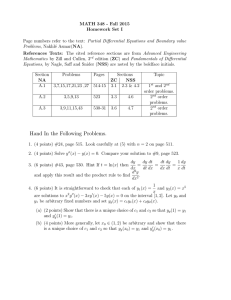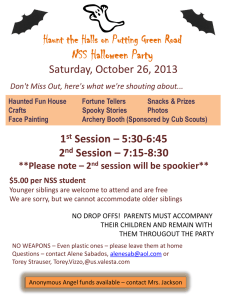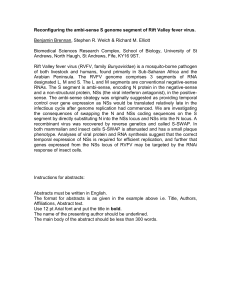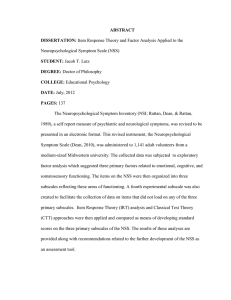Configuring Email Notifications
advertisement
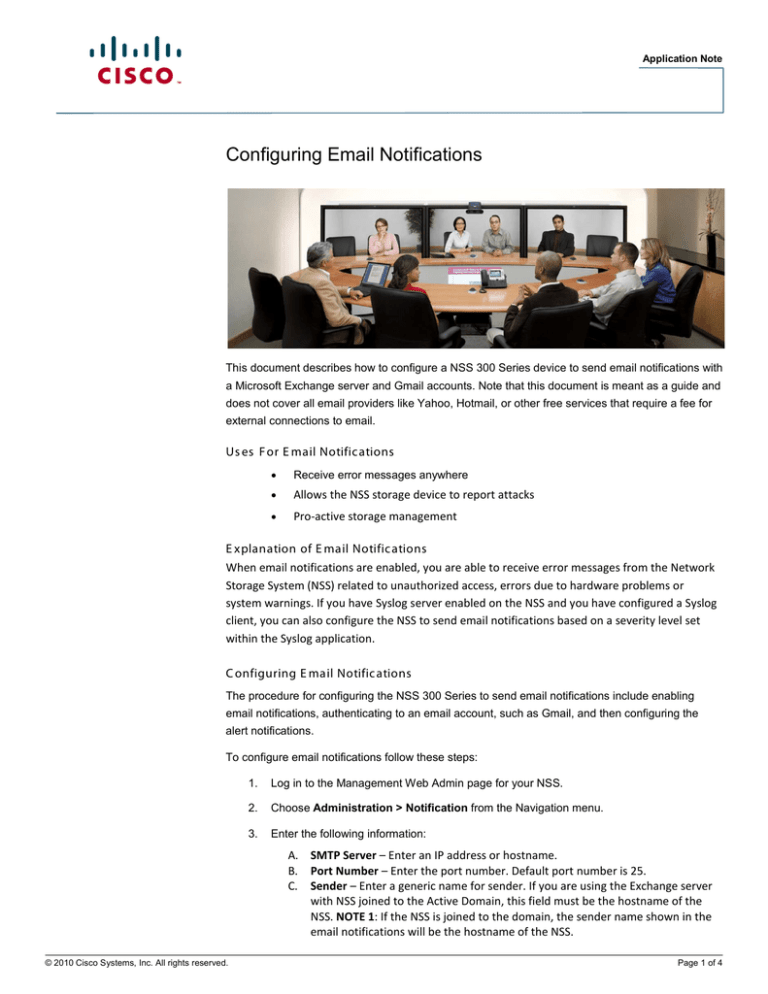
Application Note Configuring Email Notifications This document describes how to configure a NSS 300 Series device to send email notifications with a Microsoft Exchange server and Gmail accounts. Note that this document is meant as a guide and does not cover all email providers like Yahoo, Hotmail, or other free services that require a fee for external connections to email. Us es F or E mail Notific ations • Receive error messages anywhere • Allows the NSS storage device to report attacks • Pro-active storage management E xplanation of E mail Notific ations When email notifications are enabled, you are able to receive error messages from the Network Storage System (NSS) related to unauthorized access, errors due to hardware problems or system warnings. If you have Syslog server enabled on the NSS and you have configured a Syslog client, you can also configure the NSS to send email notifications based on a severity level set within the Syslog application. C onfiguring E mail Notific ations The procedure for configuring the NSS 300 Series to send email notifications include enabling email notifications, authenticating to an email account, such as Gmail, and then configuring the alert notifications. To configure email notifications follow these steps: 1. Log in to the Management Web Admin page for your NSS. 2. Choose Administration > Notification from the Navigation menu. 3. Enter the following information: A. SMTP Server – Enter an IP address or hostname. B. Port Number – Enter the port number. Default port number is 25. C. Sender – Enter a generic name for sender. If you are using the Exchange server with NSS joined to the Active Domain, this field must be the hostname of the NSS. NOTE 1: If the NSS is joined to the domain, the sender name shown in the email notifications will be the hostname of the NSS. © 2010 Cisco Systems, Inc. All rights reserved. Page 1 of 4 Configuring Email Notifications NOTE 2: The above syntax only applies if the NSS has already been joined to Active Directory with a functioning local Exchange server. If the NSS is not joined to the domain, you must specify a valid domain user and password. To authenticate to Gmail, continue with the following steps. NOTE: The settings shown above are for an IMAP Gmail account connection. For more information about how to configure your NSS with your Gmail account, click HERE . 4. Check the check box Enable SMTP Authentication. This is typically enabled when you are authenticating to an external email server such as Gmail. A. User Name - Enter your Gmail username. B. Password - Enter your Gmail password. © 2010 Cisco Systems, Inc. All rights reserved. 5. If required by the server, check the check box Use SSL/TLS secure connection. 6. Click Apply. 7. Select the Alert Notification tab. 8. Configure Alert Notification as needed for system errors and warnings. Page 2 of 4 Configuring Email Notifications 9. Configure E-mail Notification Settings by entering the email addresses to receive notifications. 10. Click Send a Test E-Mail to test your settings. When successful, a drop-down banner will display Success at the top of the page. NOTE: When sending to your company’s exchange server, the email address must be for a valid domain user with an active mailbox. C ommon P roblems and T roubles hooting T ips If the NSS device is part of an Active Directory domain: 1. When sending a test email, NSS responds with Success but no email is received. A. Check the recipient email address and ensure that it is correct and the account is active. B. Check the Exchange server queue for further error reporting. 2. When sending a test email, the NSS responds with an error. A. Ensure the SMTP server hostname is correct in the SMTP Server field. B. Ensure the Sender field shows the proper hostname of the NSS and that hostname is also what is shown in the Active Directory Users and Groups. C. © 2010 Cisco Systems, Inc. All rights reserved. Ensure that the NSS is able to resolve DNS names. If it is suspected that the NSS is not able to resolve hostnames, check the following from the Administration Web Console: 1. Choose Administration > Users from the Navigation menu. From the Users window, select Domain Users from the drop down menu. If you do not see your domain user accounts, you may need to rejoin the NSS to your Active Directory domain. 2. Choose Administration > Network from the Navigation menu. Verify that the DNS server IP address is correct. If the NSS is using a DHCP reservation make sure that it is receiving correct DNS information. Page 3 of 4 Configuring Email Notifications D. Ensure that the NSS is configured with correct Search Domain and Name Servers. 1. Open a SSH or Telnet (if enabled) session and connect to the NSS. 2. Once connected run the following command: [~] # cat /etc/resolv.conf nameserver 192.168.52.250 search MYDOMAIN.STORAGE.LOCAL nameserver 0.0.0.0 The returned output should be similar to the above. F or More Information For more information about Cisco Smart Storage Applications, visit the Cisco Small Business Community forum https://www.myciscocommunity.com/community/smallbizsupport/networkstorage. OL-23151-01 © 2010 Cisco Systems, Inc. All rights reserved. Page 4 of 4
